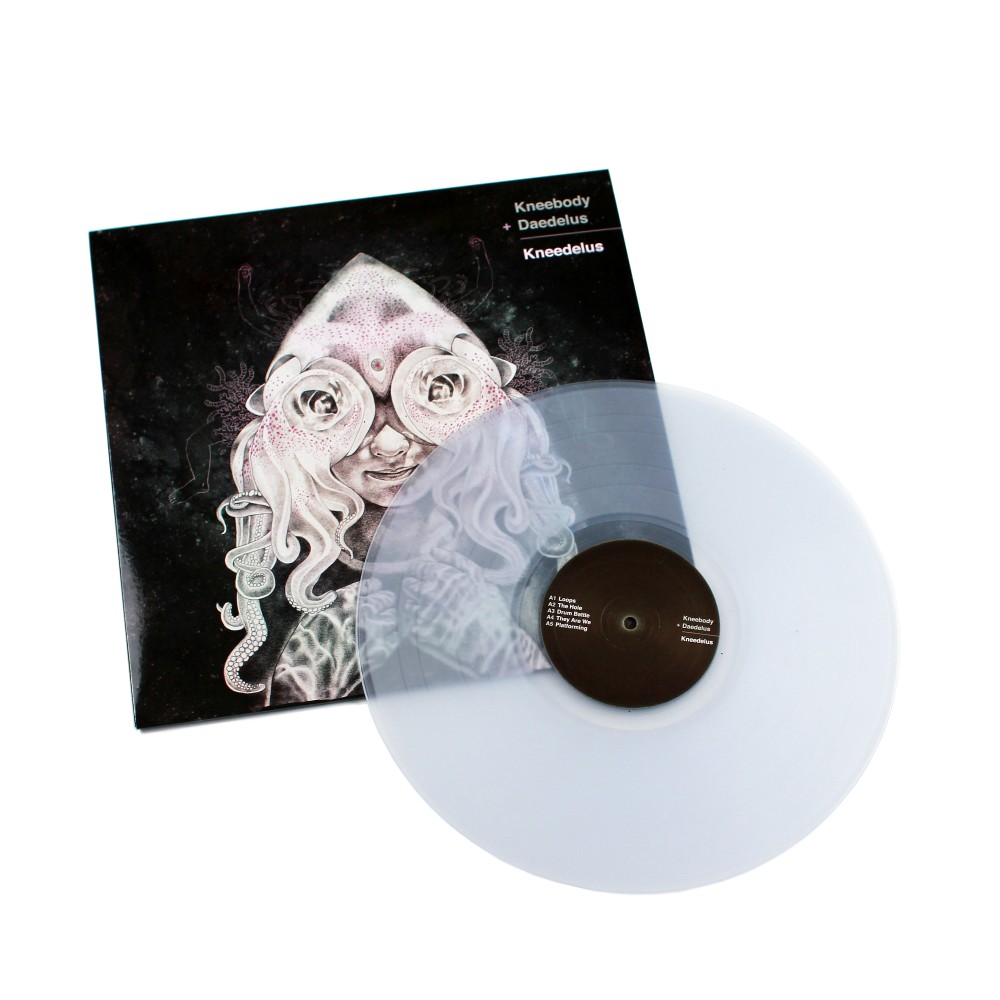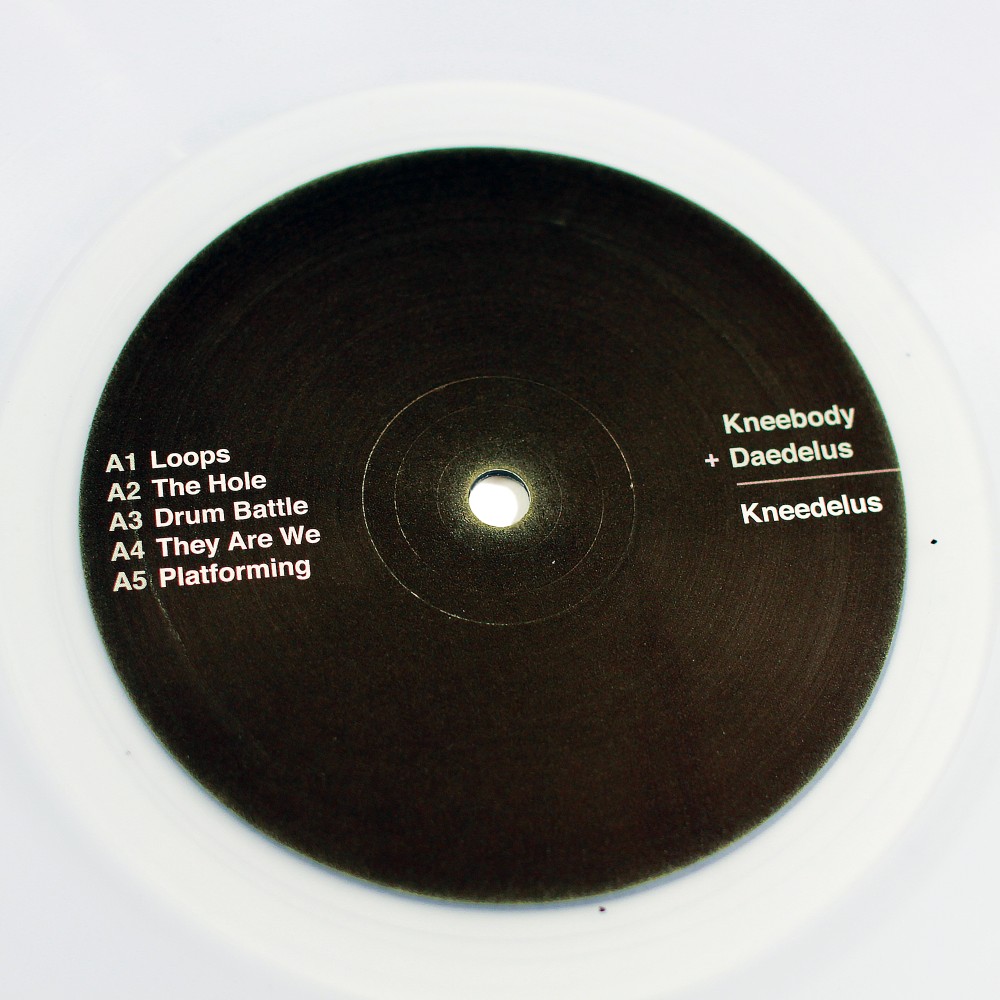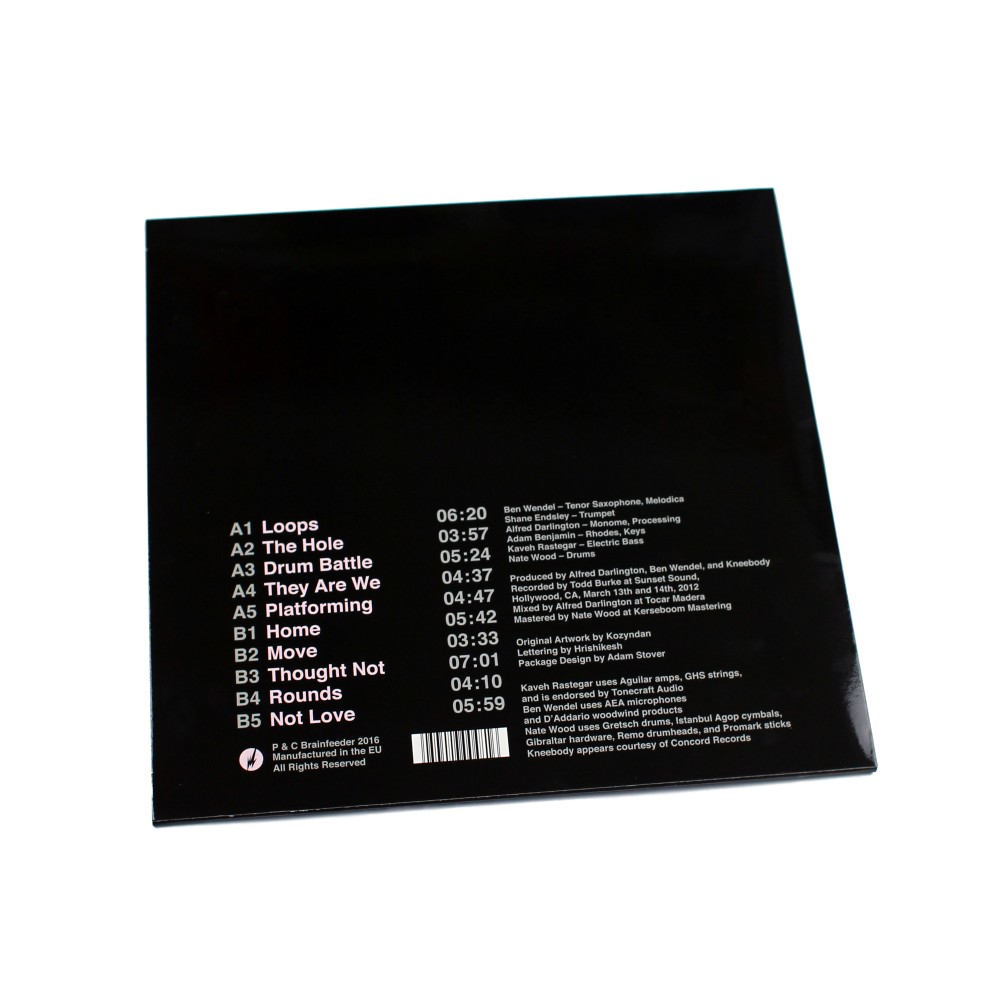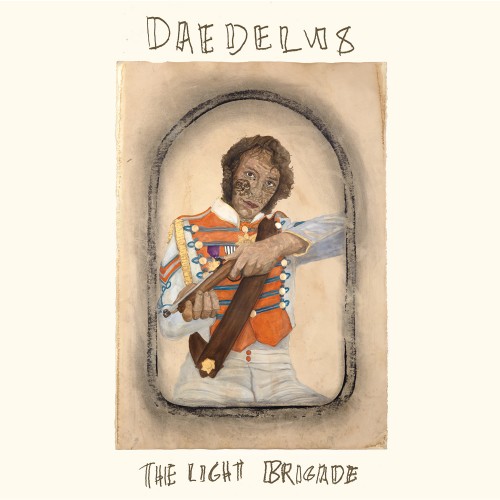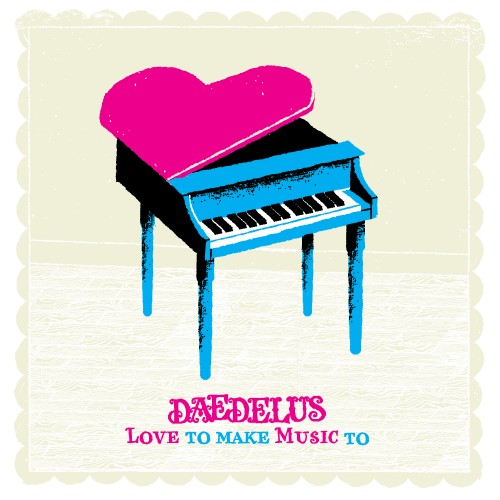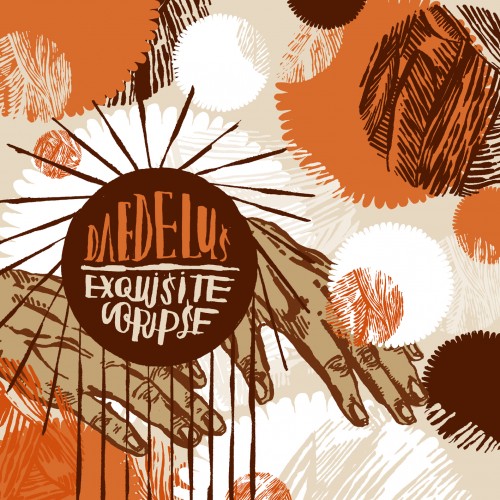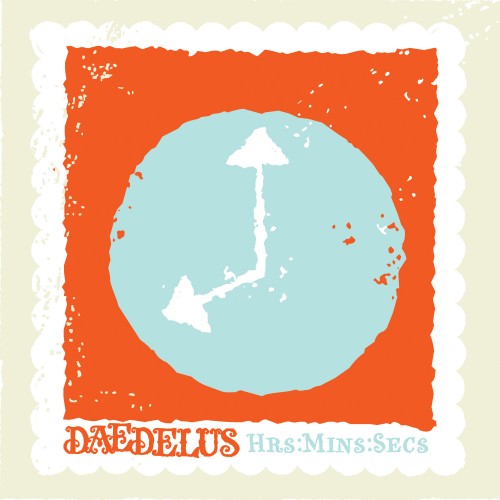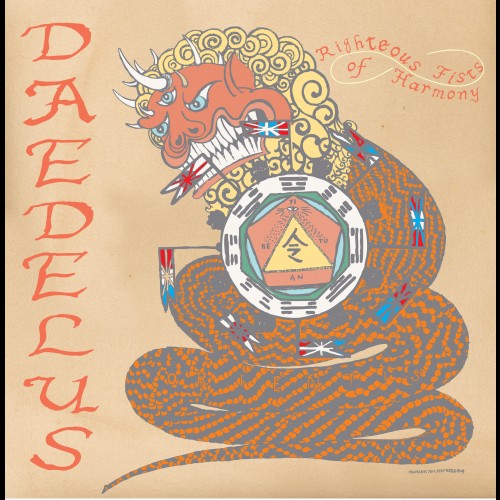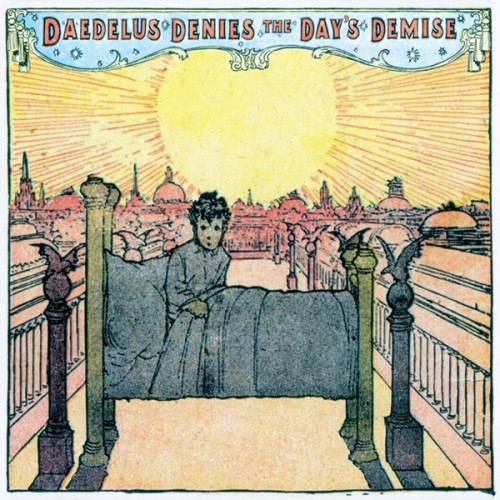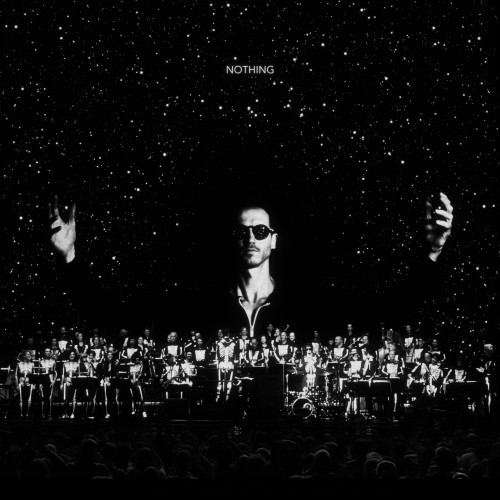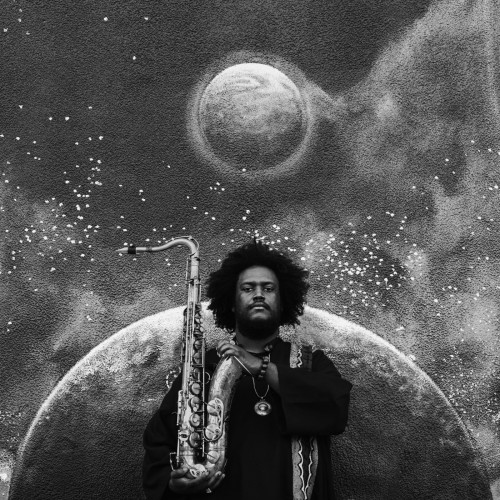Kneedelus
by Kneebody & Daedelus
— Released 27th November 2015 on Brainfeeder
The theory of technological singularity – the notion that humans and computer technology will increasingly blend together - has been explored in many forms of popular culture since it’s conception. Over the past two decades, there has been a larger movement to integrate electronic artists and jazz musicians, often leaving the former as more of a sonic addendum (floating over the music) rather than an integrated part of the ensemble. Tasked with exploring a deeper synthesis of electronic a...
The theory of technological singularity – the notion that humans and computer technology will increasingly blend together - has been explored in many forms of popular culture since it’s conception. Over the past two decades, there has been a larger movement to integrate electronic artists and jazz musicians, often leaving the former as more of a sonic addendum (floating over the music) rather than an integrated part of the ensemble. Tasked with exploring a deeper synthesis of electronic and acoustic players, instrumental quintet Kneebody’s collaboration with electronic musician Daedelus in turn creates a true union of these disparate approaches to music and genre as a whole.
The collaboration between Kneebody – keyboardist Adam Benjamin, trumpeter Shane Endsley, electric bassist Kaveh Rastegar, saxophonist Ben Wendel and drummer Nate Wood - and Daedelus had its initial roots planted as far back as high school for old friends Wendel and Alfred Darlington (aka Daedelus). “Often when I lived in LA, I would go to practice saxophone at Alfred’s house in the bathroom next to his studio. He would knock on the bathroom door and say ‘Would you mind playing something on this track?’,” recalls Wendel. “So I ended up being on at least five or six of Alfred’s albums because I happened to be there practicing."
The pair’s early musical kinship in southern California seeded a connection that grew through numerous collaborations, recordings and live performances over the years, coming to fruition in an improvised performance in 2009 at “Jazz A Vienne” between their two primary music vehicles. When Wendel was awarded a composition grant through Chamber Music America based on the theory of technological singularity, it became a catalyst to write a series of pieces that would bridge the gap between the oft-indescribable world of Kneebody and the unique aesthetic of Daedelus.
When the quintet entered the studio with Darlington, the other members brought more compositions to the fore. “Ben approached me about trying to realize some of this music that was maybe different from the Kneebody spectacular – where they are always so through composed – and do something that was more intimate,” reflects Darlington. The result is a ten-song set of original music that sits inside the rich pantheon of instrumental music, but with a modern sheen that takes the shape of a multi-headed beast straddling rock, jazz, and electronic music.
Kneedelus
by Kneebody & Daedelus
— Released 27th November 2015 on Brainfeeder
Physical |
|---|
|
LP (BF058)
Heavyweight 180g clear vinyl 12" LP. Artwork by Kozyndan. |
| CD (BFCD058) |
Physical |
Digital |
||
|---|---|---|---|
|
LP (BF058)
Heavyweight 180g clear vinyl 12" LP. Artwork by Kozyndan. |
MP3 (BFDNL058) | ||
| CD (BFCD058) | 16-bit WAV (BFDNL058W) | ||
Bundles |
||
|---|---|---|
|
Tracklist
- CD
- LP
- MP3
- 16-bit WAV
-
1
Loops
-
2
The Hole
-
3
Drum Battle
-
4
They are We
-
5
Platforming
-
6
Home
-
7
Move
-
8
Thought Not
-
9
Rounds
-
10
Not Love
-
Play All (10)
-
1
Loops
-
2
The Hole
-
3
Drum Battle
-
4
They are We
-
5
Platforming
-
6
Home
-
7
Move
-
8
Thought Not
-
9
Rounds
-
10
Not Love
-
Play All (10)
The theory of technological singularity – the notion that humans and computer technology will increasingly blend together - has been explored in many forms of popular culture since it’s conception. Over the past two decades, there has been a larger movement to integrate electronic artists and jazz musicians, often leaving the former as more of a sonic addendum (floating over the music) rather than an integrated part of the ensemble. Tasked with exploring a deeper synthesis of electronic a...
The theory of technological singularity – the notion that humans and computer technology will increasingly blend together - has been explored in many forms of popular culture since it’s conception. Over the past two decades, there has been a larger movement to integrate electronic artists and jazz musicians, often leaving the former as more of a sonic addendum (floating over the music) rather than an integrated part of the ensemble. Tasked with exploring a deeper synthesis of electronic and acoustic players, instrumental quintet Kneebody’s collaboration with electronic musician Daedelus in turn creates a true union of these disparate approaches to music and genre as a whole.
The collaboration between Kneebody – keyboardist Adam Benjamin, trumpeter Shane Endsley, electric bassist Kaveh Rastegar, saxophonist Ben Wendel and drummer Nate Wood - and Daedelus had its initial roots planted as far back as high school for old friends Wendel and Alfred Darlington (aka Daedelus). “Often when I lived in LA, I would go to practice saxophone at Alfred’s house in the bathroom next to his studio. He would knock on the bathroom door and say ‘Would you mind playing something on this track?’,” recalls Wendel. “So I ended up being on at least five or six of Alfred’s albums because I happened to be there practicing."
The pair’s early musical kinship in southern California seeded a connection that grew through numerous collaborations, recordings and live performances over the years, coming to fruition in an improvised performance in 2009 at “Jazz A Vienne” between their two primary music vehicles. When Wendel was awarded a composition grant through Chamber Music America based on the theory of technological singularity, it became a catalyst to write a series of pieces that would bridge the gap between the oft-indescribable world of Kneebody and the unique aesthetic of Daedelus.
When the quintet entered the studio with Darlington, the other members brought more compositions to the fore. “Ben approached me about trying to realize some of this music that was maybe different from the Kneebody spectacular – where they are always so through composed – and do something that was more intimate,” reflects Darlington. The result is a ten-song set of original music that sits inside the rich pantheon of instrumental music, but with a modern sheen that takes the shape of a multi-headed beast straddling rock, jazz, and electronic music.


